中国の仏像
1階 1室
2023年4月25日(火) ~
2024年4月21日(日)

「東洋美術をめぐる旅」をコンセプトに、中国、朝鮮半島、東南アジア、西域、インド、エジプトなどの美術と工芸、考古遺物を展示しています。
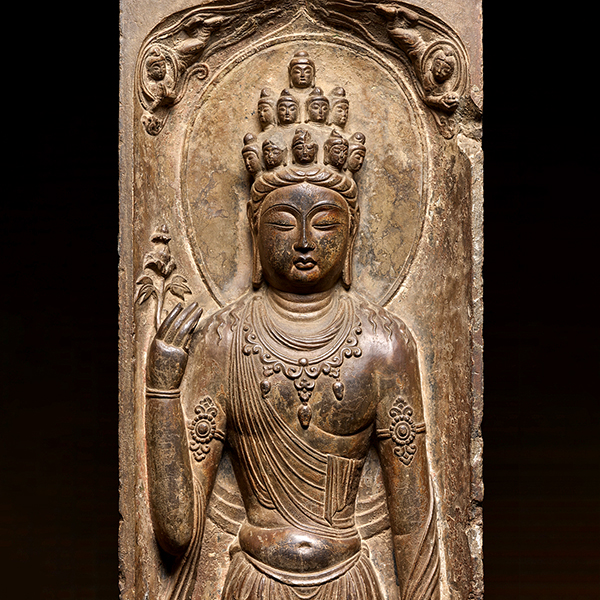
重要文化財 十一面観音龕(部分) 中国陝西省西安宝慶寺 唐時代・8世紀 細川護立氏寄贈
1階 1室
2023年4月25日(火) ~ 2024年4月21日(日)
インドから中国に仏教が伝わったのは紀元前後頃とされます。その後、南北朝時代に入ると、国家的な規模で寺院の造営が行われるようになり、仏教は中国でも大いに隆盛しました。この展示では、中国彫刻の最盛期である南北朝時代から唐時代の仏像を中心にご覧いただけます。
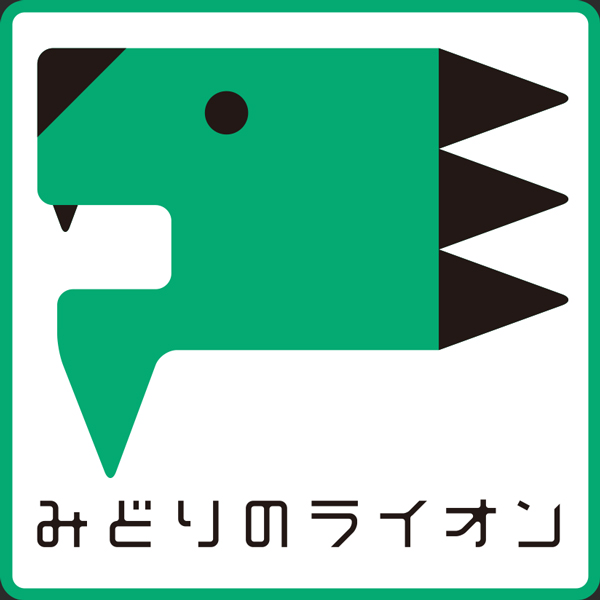
2階 2室
2023年4月1日(土) ~ 2024年3月31日(日)
「オアシス」では、アジアの豆知識を映像や体験を通してお楽しみいただけます。オアシス2は、映像で旅の紹介をします。エジプトからインドへ商いをしながら旅する商人の旅や、三蔵法師の旅をご覧ください。
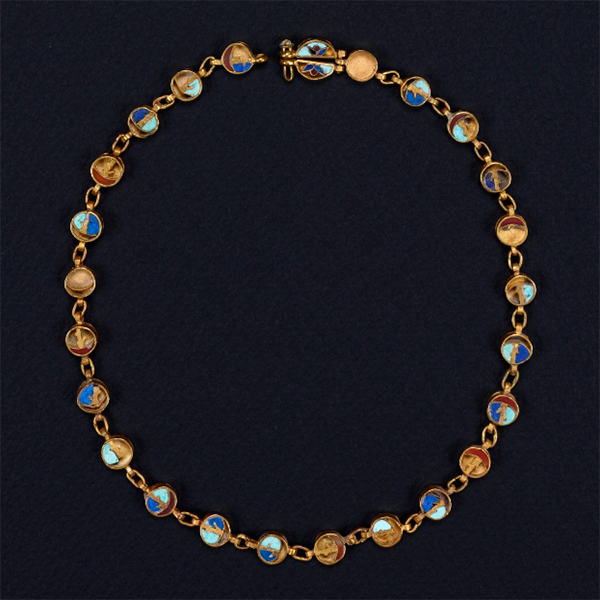
金製装身具 イラン アケメネス朝時代・前6~前4世紀
2階 3室
2023年4月18日(火) ~ 2023年7月23日(日)
人類最古の文明揺籃の地として知られる西アジアとエジプト、東地中海地域の古代美術と考古資料を中心に紹介します。エジプト美術では先王朝時代の石器や土器、木製模型などを展示するほか、東地中海地域と西アジアの美術では、シリアとイラクの出土品や土偶、キプロス島の彩文土器や石彫、さまざまな技法で製作された古代ガラス器を展示します。
(注)東洋館3室の展示は、7月9日(日)までの会期を予定していましたが、7月23日(日)まで延長します。
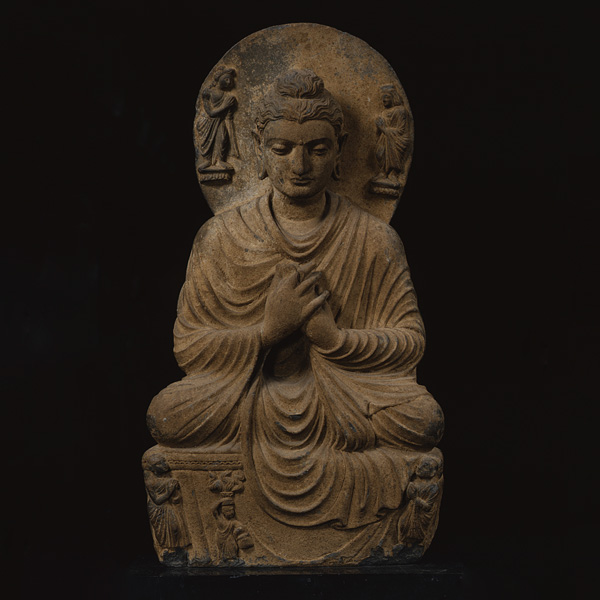
如来坐像
パキスタン・ガンダーラ
クシャーン朝・2~3世紀
2階 3室
2022年7月5日(火) ~ 2023年7月2日(日)
北インドではクシャーン朝(1~3世紀)に仏教美術が隆盛しました。1世紀頃にガンダーラ、マトゥラーにおいて相次いで仏像の制作が始まり、また、ガンダーラでは仏陀の生涯をつづった仏伝美術が盛んとなります。ここではクシャーン朝のガンダーラ美術を中心に、インドのヒンドゥー教美術なども紹介します。
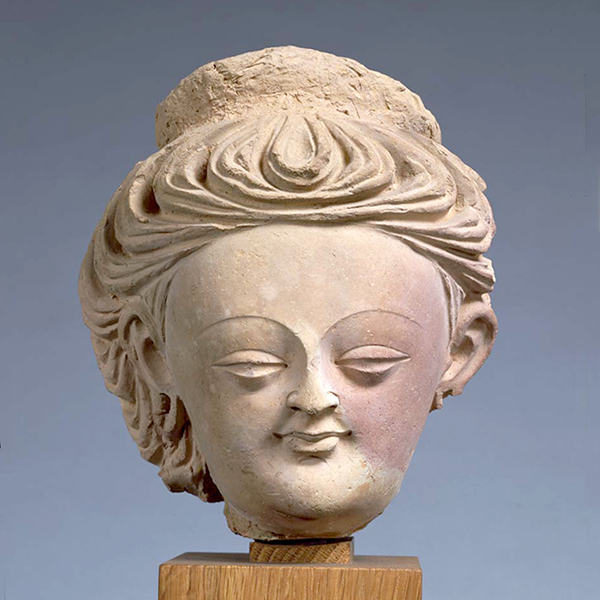
菩薩像頭部 中国・トゥムシュクぺリオ探検隊将来品 4~5世紀 ギメ東洋美術館交換品
2階 3室
2023年5月9日(火) ~ 2023年6月25日(日)
20世紀初頭にシルクロードを探検した大谷探検隊の将来品を中心に展示します。今回は、ホータンで発見された如来像頭部、クチャのクムトラ石窟で発見された塑像断片、トゥムシュクで発見された菩薩像頭部、敦煌莫高窟蔵経洞で発見された幡(模写)などを展示し、シルクロード各地の文化をそれぞれ紹介します。
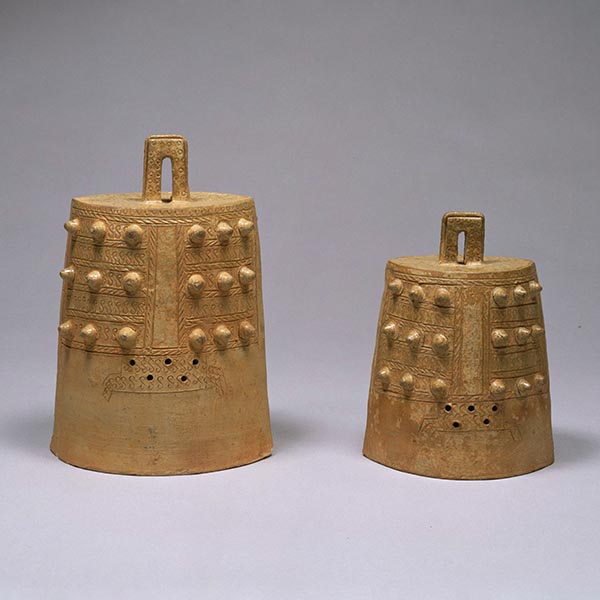
灰釉鐘 中国 戦国時代・前5~前3世紀
3階 4室
2023年5月16日(火) ~ 2023年11月12日(日)
東洋館4室から5室にかけて、中国文明の形成と発展の過程を土器、玉器、出土文字資料、青銅器などの展示によってたどります。一連の中国文明関連の展示の冒頭を飾る「中国文明のはじまり」では、黄土高原に興った彩陶や中国北方の多彩な石器群から文明のあけぼのを垣間見ることができます。また、殷時代の甲骨文字や骨器、玉器・貨幣などを紹介するほか、戦国時代の土器を紹介します。
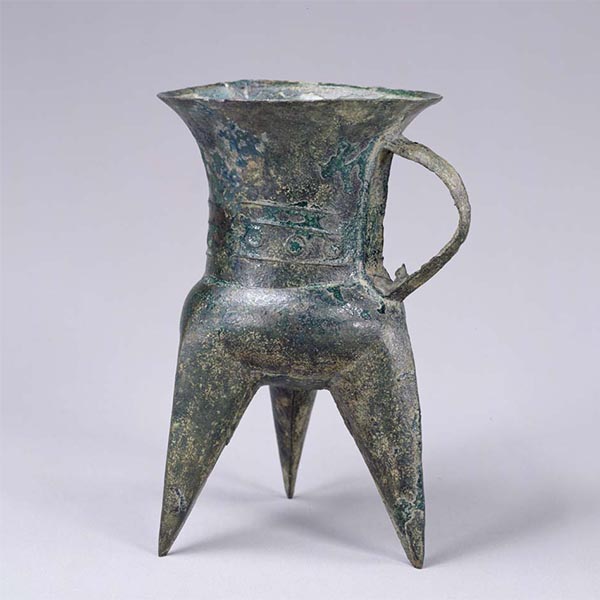
斝(か) 中国 二里頭文化(夏)~殷時代・前18~前16世紀
3階 5室
2023年3月21日(火・祝) ~ 2023年7月9日(日)
殷時代から漢時代の青銅器を中心に、先祖の祭礼に用いた容器や楽器のほか、武器や馬具、銅鏡を展示します。なかでも今回は二里頭期から西周時代にかけての多様な器種を紹介するとともに、中央の曲面ケースでは、殷時代から清時代にいたる器物を通覧し、美意識の変化をよみときます。
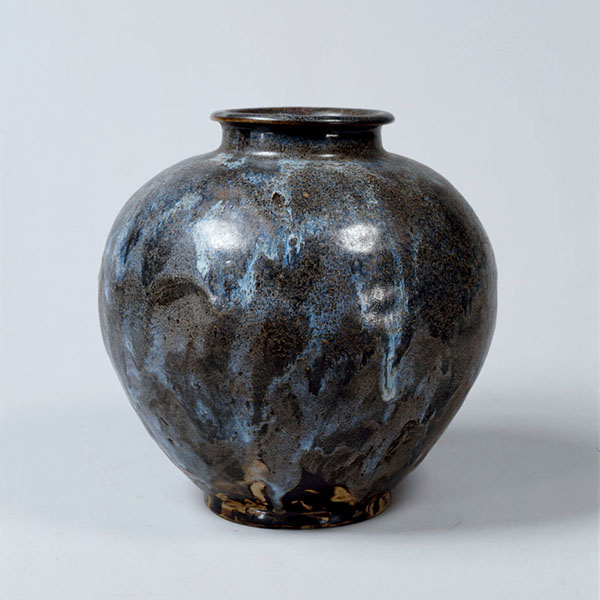
黒釉青白斑壺 中国 唐時代・8~9世紀 広田松繁氏寄贈
3階 5室
2023年5月16日(火) ~ 2023年8月6日(日)
戦国時代以降、中国文明が成熟していくに従い、王侯貴族は土を丘のように盛った墳墓を営み、その地下には死者の生活を支える家財の模型(明器)や人形(俑)などを大量に供えるようになりました。今回は後漢時代の緑釉明器のほか、2023年に没後50年を迎える広田松繁(不孤斎)のコレクションを中心に紹介します。
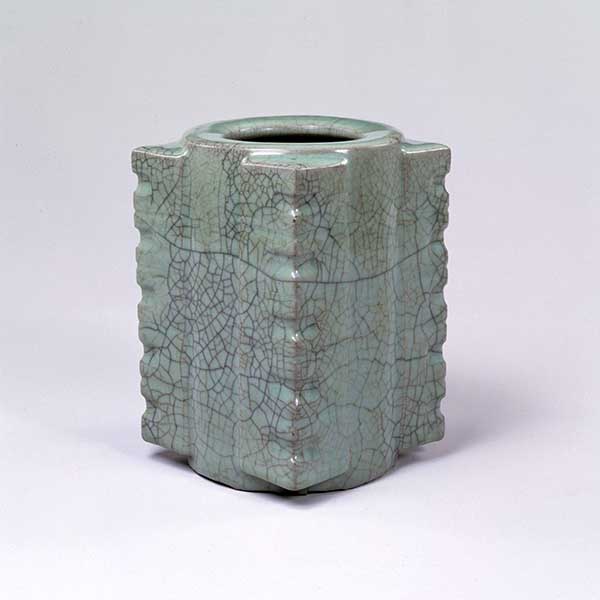
重要文化財 青磁琮形花入 中国・官窯尾張徳川家伝来 南宋時代・12~13世紀 広田松繁氏寄贈
3階 5室
2023年5月16日(火) ~ 2023年9月3日(日)
中国唐時代から清時代に至るおよそ1300年のあいだにつくられた陶磁器を展示します。今回は、2023年に没後50年を迎えた広田松繁(不孤斎)の幅広いコレクションのなかから、これまで展示する機会が少なかった作品を中心に、中国陶磁史の流れを紹介します。
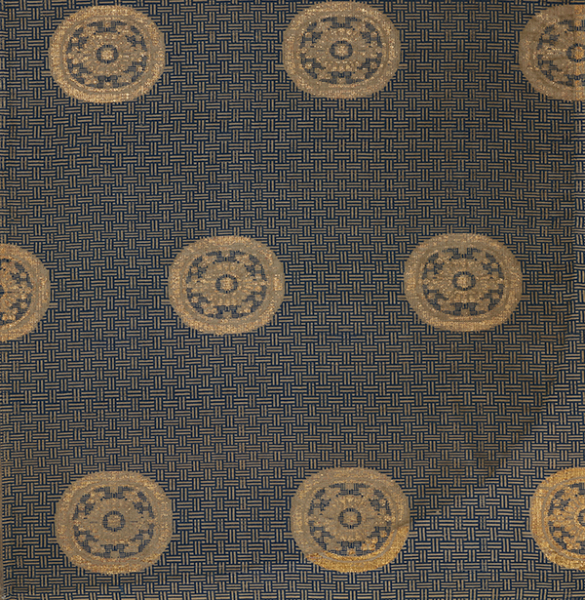
白地網代丸文様錦 糸屋風通 中国 前田家伝来 明時代・16~17世紀
3階 5室
2023年5月30日(火) ~ 2023年8月20日(日)
当館に所蔵される加賀藩前田家伝来の作品を中心に、元時代から明時代より製作され、日本に輸入された金襴・緞子・間道・錦などの名物裂を展示します。各作品の呼称とその由来とともに、江戸時代の茶人たちが抱いた名物裂の価値観に触れることで、日本独特の舶載裂への憧憬を紹介します。
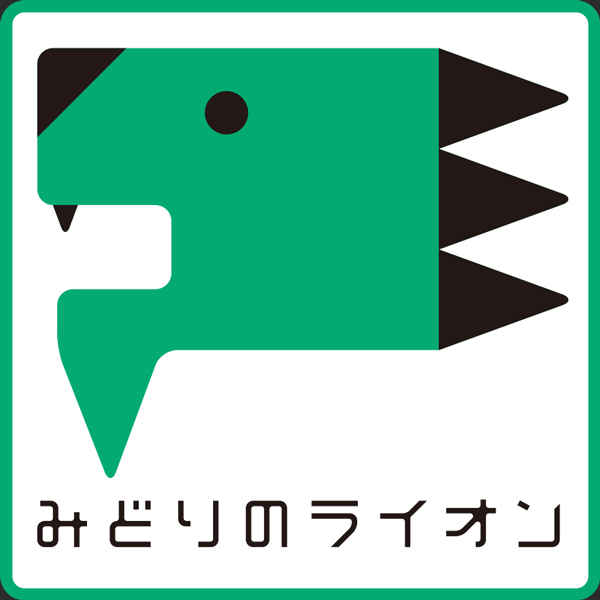
3階 6室
2022年9月21日(水) ~ 2024年3月31日(日)
今日の運勢、相性占い、手相、姓名判断など、日本人にとって、現在でも占いは、とても身近なものではないでしょうか。占いは古来から、アジアの国々 でも、 人々の暮らしに息づいていたようです。その国の信仰、思想、天文学あるいは統計学にも基づいて、占いは発展していきました。
このコーナーでは、そんな占いの一部を皆様に体験していただこうと思います。東洋館をめぐる旅の途中に、オアシスで一息ついて、旅の行方を占ってみてくだ さい。また、あまり良い結果がでなかったとしても、がっかりしないでください。ラッキーアイテムのスタンプを用意していますので、運を良いほうに転じて、 楽しい旅を続けてください。
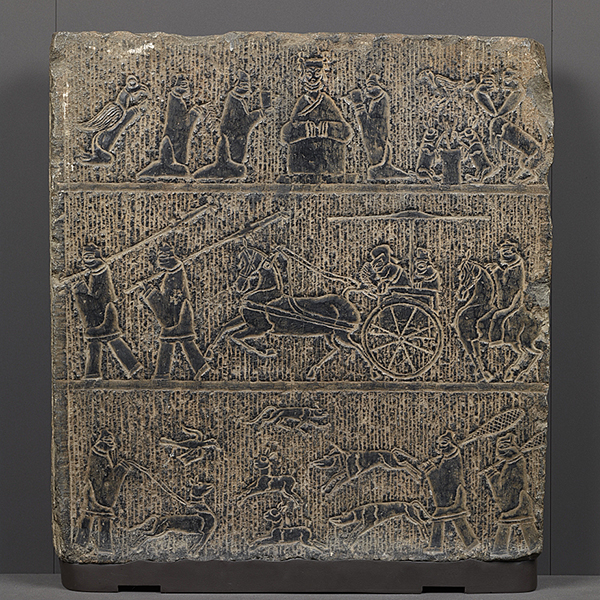
画像石西王母/馬車/狩猟 中国山東省晋陽山慈雲寺天王殿 後漢時代・1~2世紀
4階 7室
2023年4月18日(火) ~ 2024年4月14日(日)
後漢時代(1~2世紀)の中国山東省や河南省南部等では墓の上に祠(ほこら)を、地下には棺などを置く部屋である墓室を石で作りました。祠や墓室の壁、柱、梁などの表面には、先祖を祭るために当時の世界観、故事、生活の様子などを彫刻して飾りました。画像石と呼ばれるこれらの石刻画芸術は中国の様々な地域で流行しましたが、ここではとくに画題が豊富で優品の多い山東省の作品を一堂に集めて展示します。
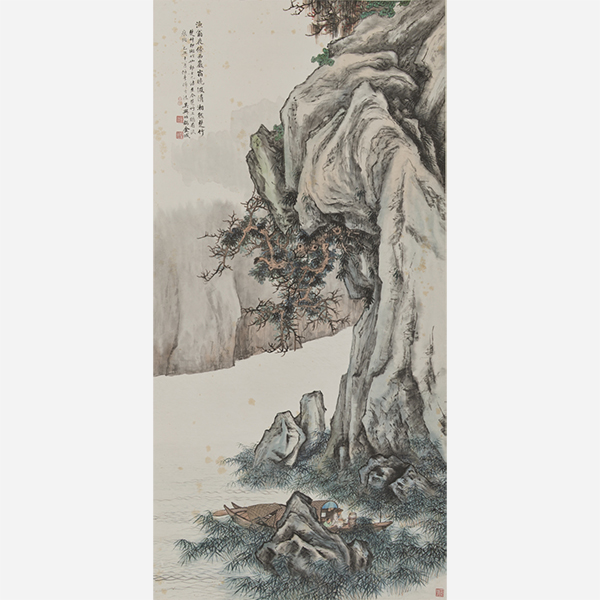
倣李唐清湘漁父図軸 金城筆 中国 中華民国14年(1925)
4階 8室
2023年4月25日(火) ~ 2023年6月4日(日)
中国絵画の特徴のひとつは、早い時期から風景そのものの絵画化に意味が見出され、山水表現が独自の発展を遂げた点にあります。長い伝統をもつ中国の山水画は、20世紀に入ってからの近代化という大きな社会変動のなかで、伝統をどのように継承するか、あるいはどのように変革するか、という命題に向き合うことになりました。近代を生きた画家たちは、展覧会への出陳、画学校での指導や学習、欧州や日本への留学といった、これまでの中国の画家たちとは異なる経験を重ねつつ、それぞれに新たな表現を模索していきます。近代画家たちによる、進取の精神に富む、清新な山水表現を紹介します。
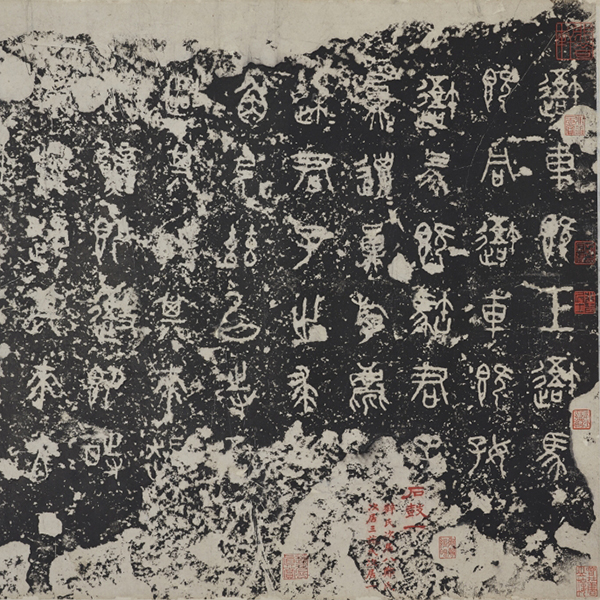
石鼓文(部分) 中国 戦国時代・前5~前4世紀 高島菊次郎氏寄贈
4階 8室
2023年4月25日(火) ~ 2023年7月9日(日)
漢字は古来より中国で形体を変えながら、現代に至る3300年以上もの間、連綿と受け継がれてきました。漢字の書の様式(書体)は、大きく篆書・隷書・草書・行書・楷書の五種に分類されます。
古代においては地域差もありながら、五書体は数世紀の時間をかけてゆるやかに変化しました。そのため、成立時期の特定は困難ですが、現存する資料などから、およそ「篆書(殷時代後期)→隷書(戦国時代)→草書(前漢時代)、行書(後漢時代)、楷書(後漢時代末期~三国時代)」の順で発生したと考えられています。
一方、各々の書体のなかでも、書きぶり(書風)は多様で、個別の作品が持つ様々な趣は、書の鑑賞における醍醐味と言えます。本展では、前期(4月25日~6月4日)に篆書・隷書、後期(6月6日~7月9日)に草書・行書・楷書と分けて、西周時代から北宋時代までの金石資料の拓本や法帖、明時代から中華民国時代までの肉筆資料から、五書体の諸相をご覧いただきます。
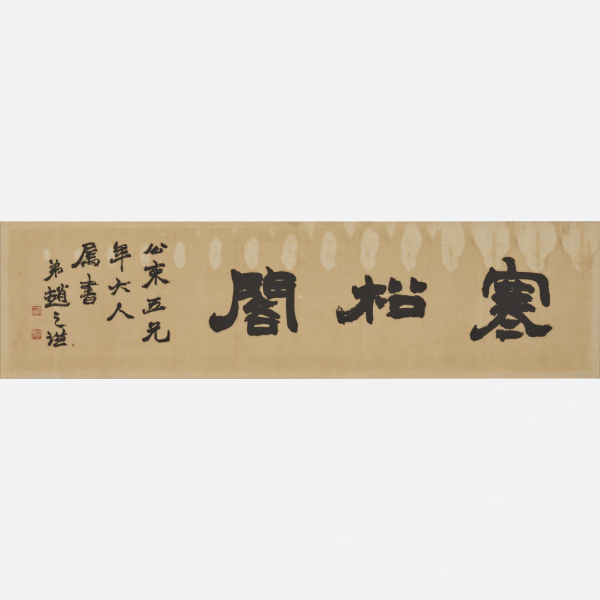
隷書「寒松閣」額 趙之謙筆 中国 清時代・19世紀 高島菊次郎氏寄贈
4階 8室
2023年4月25日(火) ~ 2023年7月9日(日)
宋時代以降の文化は、文人や学者の書斎を中心として育まれてきたといえます。明時代以降、文人の文化は富裕な商人層にも浸透し、筆墨硯紙はもとより、書画を清玩する空間そのものにも、洗練された趣味が求められました。
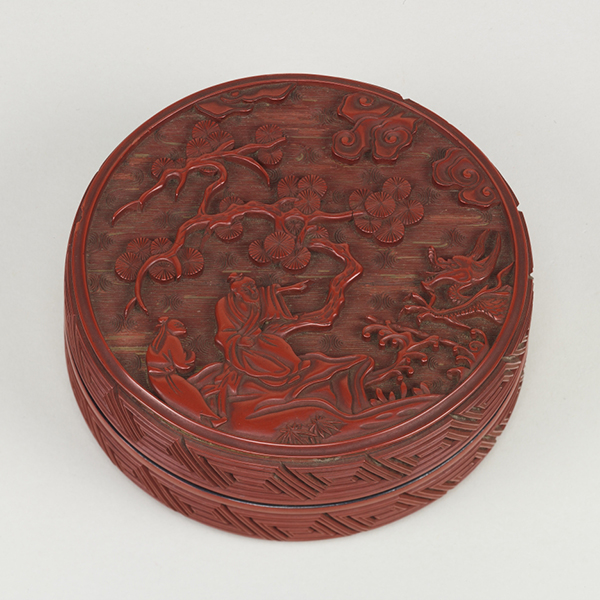
仙人龍堆朱合子 中国 元時代・14世紀
5階 9室
2023年4月4日(火) ~ 2023年7月2日(日)
中国漆工は新石器時代にさかのぼる古い歴史をもち、その装飾技法として、塗り重ねた漆を彫刻する彫漆、貝殻を成形して器体に貼付する螺鈿、漆器に文様を彫って金箔を充填する鎗金、文様部に色漆を施して線彫りの輪郭をほどこす存星などがあります。その文様にも、山水・花鳥・楼閣人物といった絵画的文様や、唐草文が抽象的に発達した屈輪文のほか、黒漆や朱漆を塗るばかりで器形を美しく表現する無文漆器など多種多様なものがあります。今回は、元時代から清時代の堆朱漆器を展示します。
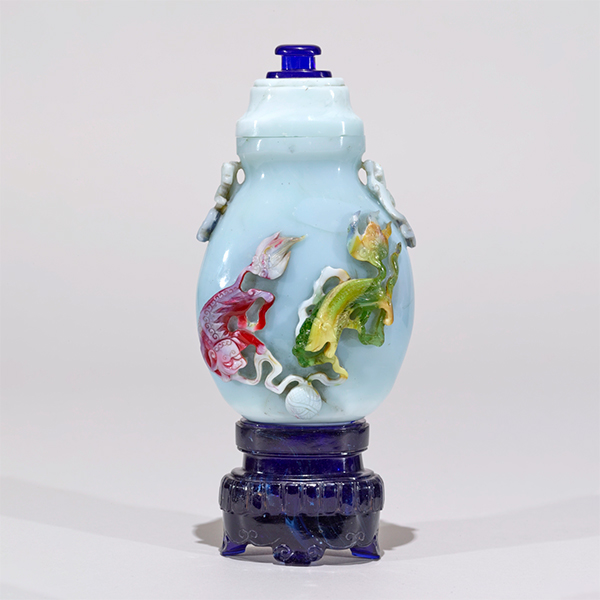
獅子浮文ガラス扁壺 「大清乾隆年製」銘中国 清時代・乾隆年間(1736~95年)
5階 9室
2023年4月4日(火) ~ 2023年7月2日(日)
中国・清時代にはさまざまな材質・技法の工芸品がつくられました。それらはいずれも精緻な技巧と清雅な作風に特色があります。今回の展示ではガラス器、石の質感を生かした俏色玉器、多様な材質で製作された吉祥器物の如意を展示します。
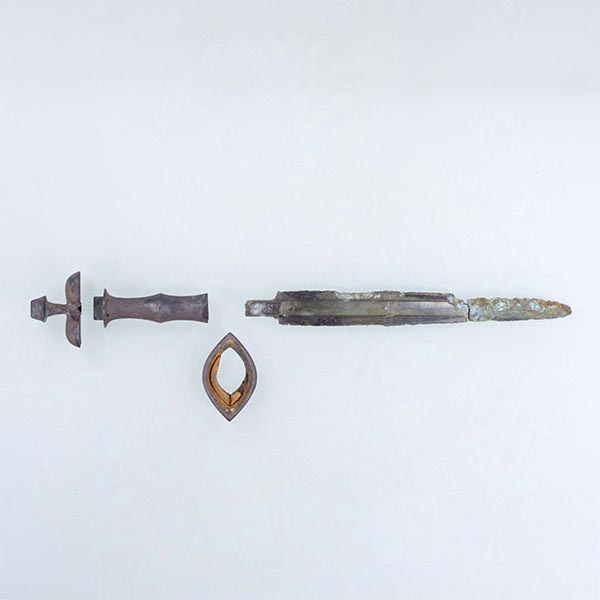
銅剣 朝鮮平壌鰲村里出土 初期鉄器時代・前2世紀
5階 10室
2023年5月23日(火) ~ 2023年11月19日(日)
朝鮮半島の青銅器時代・初期鉄器時代の作品を中心に、朝鮮半島の考古資料を展示します。石製や青銅製の武器、高度な鋳造技術によって作られた獣文飾板などにより、朝鮮半島に有力者が成長していく様をご覧ください。また、漢文化の影響を色濃く反映した緑釉の模型や、楽浪に特徴的な灰白色に焼き上げた土器などを紹介します。
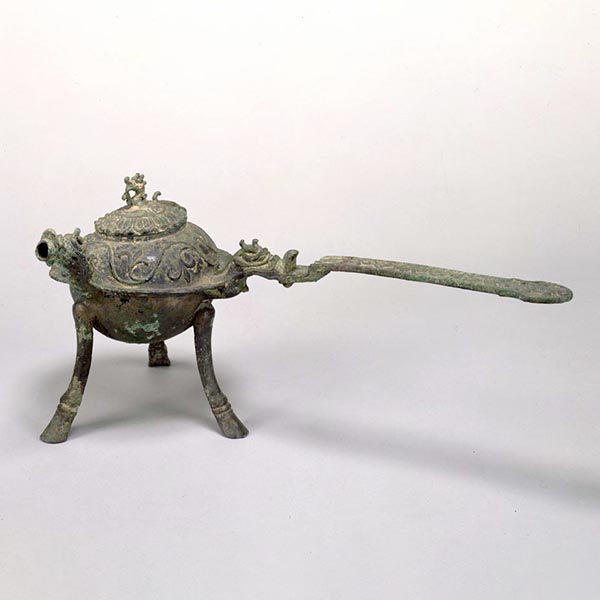
重要文化財 銅製鐎斗
伝韓国陜川出土 三国時代・6世紀 小倉コレクション保存会寄贈
5階 10室
2023年5月23日(火) ~ 2023年11月19日(日)
朝鮮半島の三国時代に、各地の有力者が覇を競った様を装身具・武器・馬具などを通じて概観します。青銅器時代に各地に生まれた有力者たちは、北の高句麗、西南の百済、東南の新羅、南の加耶諸国(~562年)という勢力にまとまり、それらは金・銀・銅・鉄・ガラス・ヒスイなどの素材を駆使し、それぞれに地域性豊かな装身具、武器、馬具、土器、瓦などを生産しました。今回は、王たちの権威を示す装飾大刀など、当館を代表する朝鮮考古資料を展示します。また、中央のステージで高麗時代の重臣である崔忠献の墓誌を紹介します。
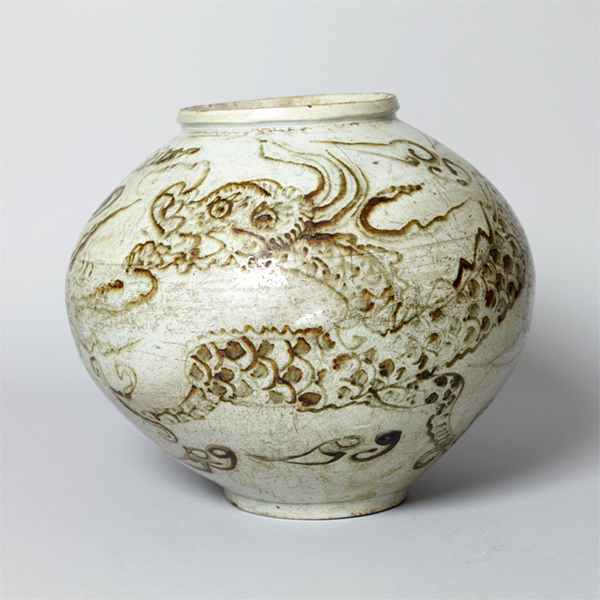
鉄砂雲龍文壺 朝鮮 朝鮮時代・17世紀 清水信子氏寄贈
5階 10室
2023年5月23日(火) ~ 2023年11月19日(日)
原三国時代から朝鮮時代までの陶磁史を紹介します。朝鮮半島では原三国時代に楽浪の影響を受けて製陶技術が発達し、三国時代には各地で覇を競う有力者の成長と相俟って、地域ごとに多様な形態の土器が作られるようになりました。やがて高麗時代には中国の影響のもとに青磁の生産が始まり、独自の様式が完成します。続く朝鮮時代になると粉青沙器や白磁など多様な陶磁器が焼かれるようになりました。今回の展示では、原三国時代から統一新羅時代までの土器を通覧するとともに、高麗時代以降の陶磁器は、青磁、粉青沙器、白磁の流れを紹介し、のぞきのケースでは碗類の変遷をたどります。
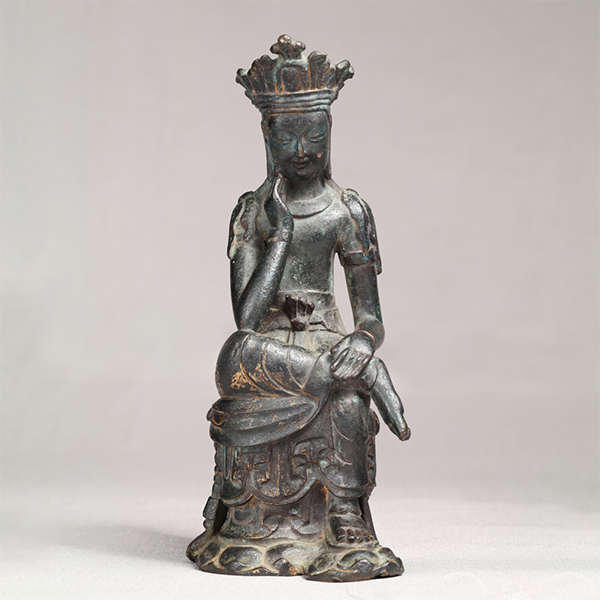
菩薩半跏像 朝鮮 三国時代・7世紀 小倉コレクション保存会寄贈
5階 10室
2023年4月11日(火) ~ 2023年10月9日(月・祝)
朝鮮半島に仏教が伝わったのは、三国時代の4世紀から5世紀です。ここでは、主に三国時代から統一新羅、高麗時代の金銅仏、瓦磚などを展示します。今回は特に百済の文様磚や高麗時代の銅鏡にも焦点をあてます。
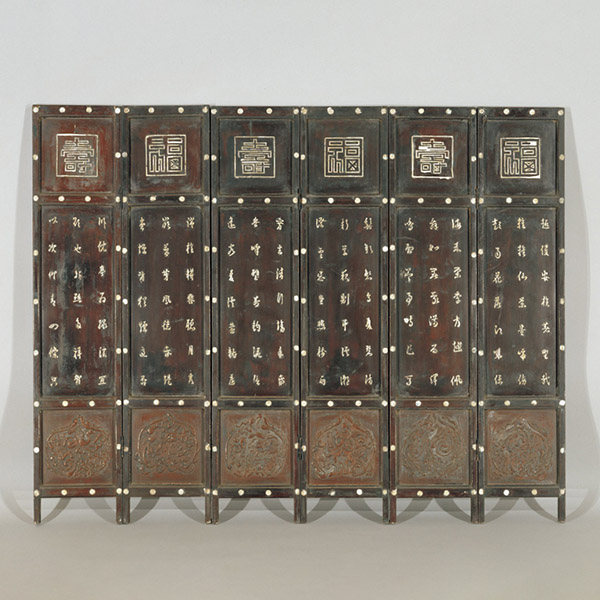
屛風 朝鮮 朝鮮時代・19世紀 小倉コレクション保存会寄贈
5階 10室
2023年5月30日(火) ~ 2023年9月24日(日)
朝鮮王朝時代の両班階級の人々の生活文化を紹介します。壁面ケースでは、書架や銘々膳、木製屛風などの家具を展示します。独立ケースでは、酒器や金属製の食器「パンサンギ」のほか、文人が使用した黒笠、煙管などを展示します。
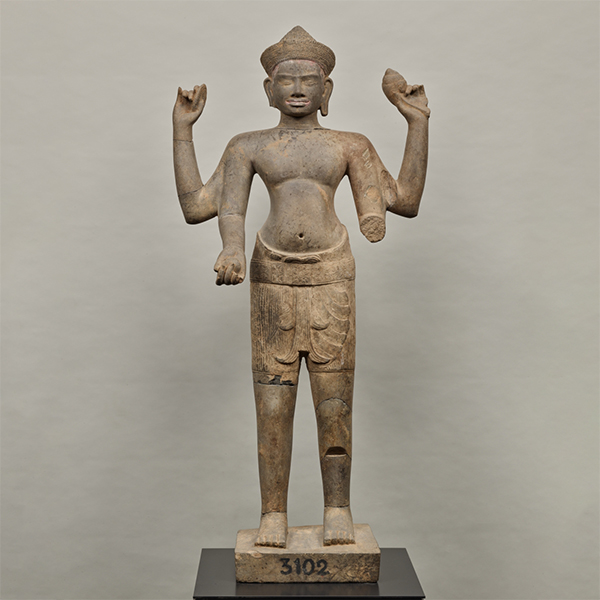
ヴィシュヌ立像 カンボジア、プラサット・オロックフランス極東学院交換品 アンコール時代・12世紀
地下 11室
2023年4月11日(火) ~ 2024年4月7日(日)
現在のカンボジアにおいて、9世紀初頭から600年余り続いたアンコール王朝の時代には、クメール族による独特の美術様式が完成しました。中でも11世紀末から12世紀にかけて造られたアンコール・ワットがその最盛期です。この部屋では10~13世紀にアンコールの寺院を飾った仏教およびヒンドゥー教の彫像、浮彫の建築装飾をはじめとする石造彫刻を展示します。いずれも第2次世界大戦中におこなわれた、フランス極東学院との交換品です。
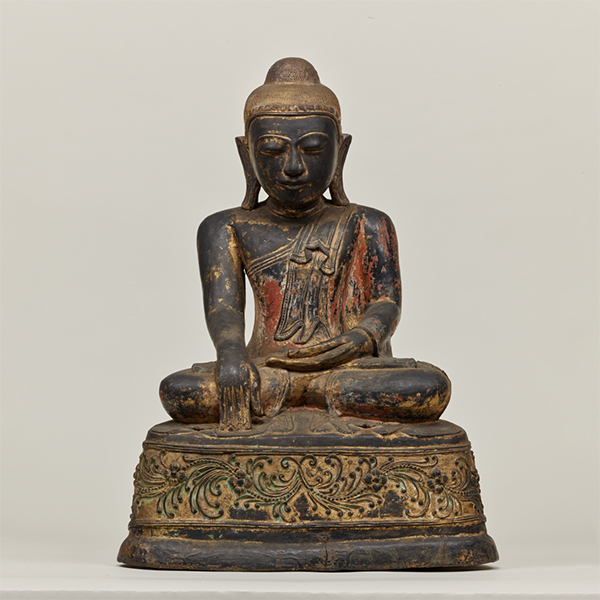
仏陀坐像 ミャンマー コンバウン朝・18世紀
地下 12室
2023年4月11日(火) ~ 2023年10月9日(月・祝)
東南アジアでは、古代よりインド、スリランカの影響を受けて仏教やヒンドゥー教の彫像が数多く制作されました。それらはいずれも地域特有の発展をとげ、独自の美術様式が花開きました。ここでは、インドネシア、カンボジア、タイ、ミャンマーの仏像、ヒンドゥー神像を、金銅像を中心に展示します。
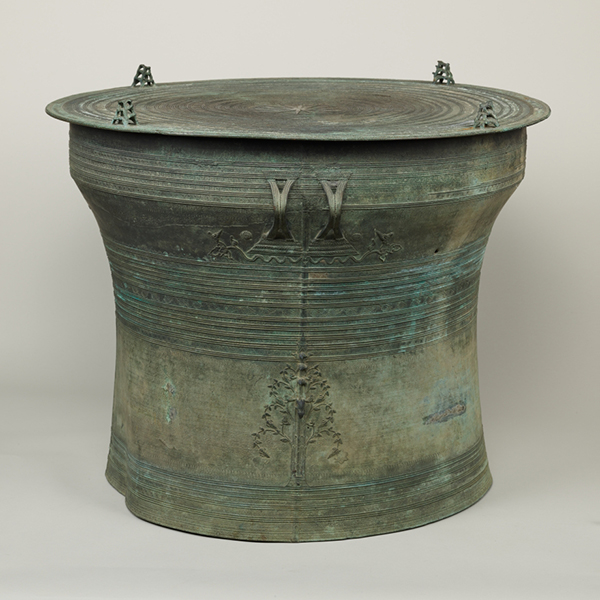
銅鼓 ラオス 18~19世紀 崎山喜三郎氏寄贈
地下 12室
2023年4月11日(火) ~ 2024年4月7日(日)
60万年以上前に遡る前期旧石器時代の楔形石器や、インダス文明滅亡後の前2千年紀に栄えた埋蔵銅器文化の銅器はいずれもインドからもたらされた希少な考古資料であり、これらの展示を通してインドの先史時代と古代の文化を紹介します。また、タイ北東部のバンチェン地方ではおもに前3~後2世紀に武器や装身具を主体とする青銅器の文化が栄えました。当館が収蔵する500点以上のバンチェン出土品から選りすぐった優品を中心に、東南アジア各地からもたらされた多様な考古資料を一堂に集めて展示します。
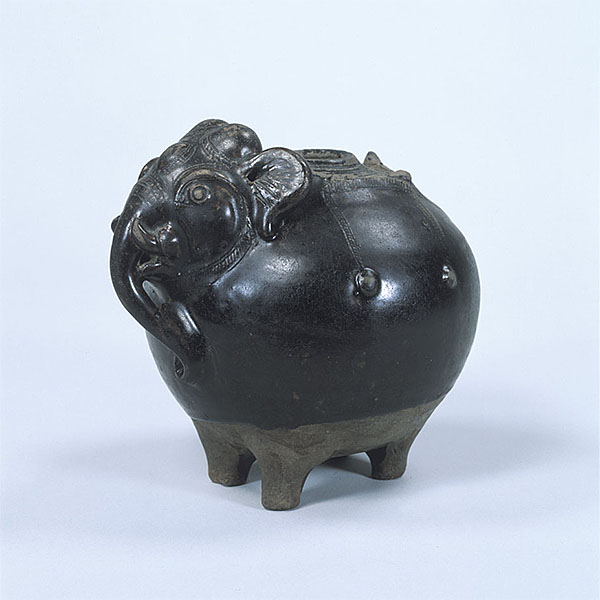
黒褐釉象形容器 クメール アンコール時代・12~13世紀
地下 12室
2023年4月4日(火) ~ 2023年7月30日(日)
東南アジアのカンボジア、タイ、ベトナムでつくられた陶磁器を時代別、地域別に展観します。今回は独立ケースでフランス極東学院交換品、および近年の寄贈品を中心とするクメールのやきものをまとめて紹介します。
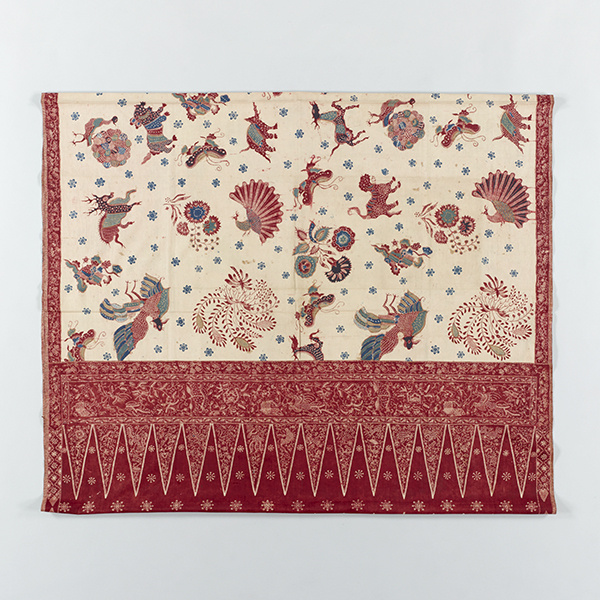
サロン(腰衣)白地花鳥獣文様バティック
インドネシア・ジャワ島北岸・プカロガン 19~20世紀
地下 13室
2023年5月30日(火) ~ 2023年8月20日(日)
多くの島々からなるインドネシアでは、各地域・部族で独自の染織文化を営んできました。チャンティンと呼ばれる蝋描きの道具や、チャップと称される金属製の型で蝋防染を施し、繊細な文様を染め出すバティックをはじめ、儀礼用の浮紋織やイカットなど、用いられた技法・文様ともにその種類はさまざまです。本展では、19世紀から20世紀にかけて製作された染織品を、地域ごとに展示し、インドネシアの多様な織りと染めの世界を、作品の用途とともに紹介します。
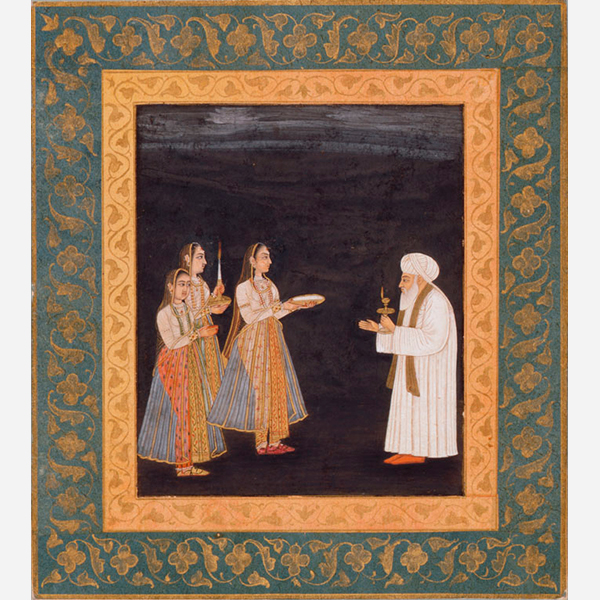
聖職者を訪ねるムスリムの女たち 地方ムガル派 インド 17世紀後半~18世紀初
地下 13室
2023年5月9日(火) ~ 2023年6月4日(日)
インドでは、インド神話や、シヴァ神、ヴィシュヌ神などのヒンドゥー教の神々、王の肖像や歴史的なエピソード、男女の恋愛などさまざまなテーマを緻密なタッチと鮮やかな色彩で描いた、細密画とよばれる絵画のジャンルが発達しました。今回の展示では、ムガル派をテーマに細密画を紹介します。
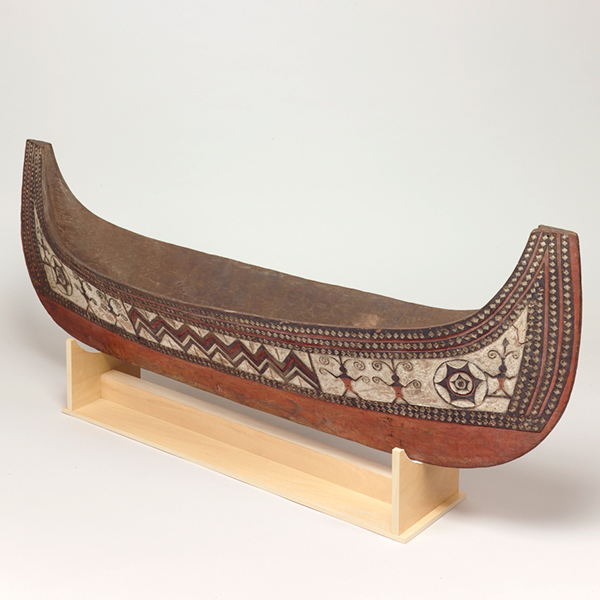
漁船模型 台湾、台東県蘭嶼 19世紀後半~20世紀初頭
地下 13室
2023年4月11日(火) ~ 2023年7月2日(日)
台湾本島の南東の沖合に浮かぶ孤島、蘭嶼(らんしょ)に住むタオ族(ヤミ族とも)の生活文化に関する民族資料を展示します。ゴンドラ型の漁船、トビウオなどの解体に用いた特殊な木皿など、海と強い関わりをもつタオ族の伝統文化を紹介します。